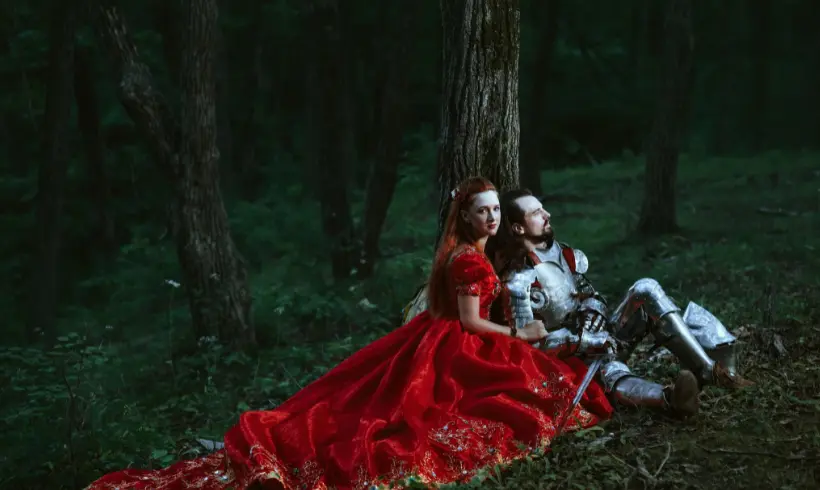In this article, we will explore the science fiction novel, its meaning, origins, most important characteristics, and you will learn about some of the most famous works of the genre.
Over the past centuries, science and technology have shaped our daily lives.
From the invention of penicillin to the use of algorithms to sort content on the Internet, human ingenuity has achieved what was once thought impossible.
It is precisely there, in the search for the impossible, that literary fiction comes into play.
Some of the most influential authors in history have used their imaginations to go beyond the minds of scientists themselves.
Time travel, spaceships that visit Earth and characters that use teleportation to travel to dystopian worlds, etc. Science fiction can do it all.
At the end we invite you to visit:
| Best Books: The Best 20 Novels [Paid]
| Gifts Books: The Best 5 Novels to Give as Gifts
What is a science fiction novel?
Science fiction is a genre of literary fiction that aims to creatively represent real or imaginary concepts of science and technology.
These concepts can be part of the central theme of the work or the scenarios presented in it. In science fiction novels, the plot is usually set in the future.
Generally, science fiction stories address the negative consequences of the use of technology and science on society and individuals.
Some of the most influential science fiction books predicted important inventions in this field, such as robots and the atomic bomb. According to science, many of the elements within these stories are possible.
Hard science fiction, one of the subgenres of science fiction, focuses on the technical details of the story from a scientific point of view.
In these stories, the plot must be specific and completely possible to materialize in the real world.
Origin of the science fiction novel
The science fiction novel has its origins in antiquity when there was not much difference between reality and mythology.
A True Story (2nd century B.C.) is considered the first novel of the genre, thanks to the fact that it contains several of the distinctive elements of science fiction, such as extraterrestrials, wars between worlds, and space travel.
However, although many ancient writers chose to address some of these issues, their narratives were not very credible.
In fact, the character of “believability” is what differentiates science fiction from other speculative genres, such as horror and fantasy narratives.
The West at the forefront
Science fiction literature made its first appearance in Western countries, especially after the advent of the Industrial Revolution.
Due to the social and economic changes generated by this phenomenon, the intellectuals of the time decided to analyze the impact of technology and science on the future.
In fact, by the 20th century, there were multiple fictitious scenarios in people’s imagination regarding extraterrestrial life, robots, and the time machine.
The term science fiction first appeared during the 1920s. The first to use it was Hugo Gernsback, an American inventor and publisher considered the first promoter of the genre.
Essential characteristics of the science fiction novel
Use of futuristic and imaginative concepts
As mentioned above, science fiction stories deal with the future based on technological and scientific developments.
As such, these works are replete with concepts of advanced technology and science, parallel worlds, cybernetics, robotics, artificial intelligence, the singularity, and some ways to achieve immortality.
Alternative scenarios or worlds
Some of the things you’ll constantly find in science fiction stories are far-flung, different, or weird scenarios.
Writing science fiction is about creating alternative worlds for readers to immerse themselves in. The world can be in the future or the present, be on another planet or be in ancient times.
Prophetic and warning sense
The dose of drama included in science fiction stories is driven by warnings, prophetic messages, utopian desires, political extremism, parodies, satire, and allegorical elements that show the process of social change from technology, from frustration to victory.
Speculative nature
Most of the time, this type of literature is created to produce astonishment due to its speculative nature.
Science fiction authors often explore the latest research and advances in science and technology to predict all kinds of societal changes.
Credibility
While it is fiction, to add credibility to their stories, science fiction authors must possess a solid knowledge of reality, history, the scientific method, and nature in general, among others.
Use of dystopia
Many science fiction stories talk about our society by referring to another one. To achieve this credibly and attractively, many authors resort to dystopia.
In dystopian societies, the opposite is true of utopia. In this sense, science fiction stories are loaded with misery, oppression, and authorities that control everything.
Most famous science fiction novels
Journey to the Center of the Earth by Jules Verne
Since its publication in 1864, Jules Verne’s Journey to the Center of the Earth has become a classic of science fiction literature.
The book by the famous French writer tells the story of Otto Lidenbrock, a professor of mineralogy who decides to travel to the interior of the Earth together with Hans, a guide, and his nephew Axel, who is skeptical about the dangerous journey.
During the journey, the characters will face all kinds of challenges, including wild animals, natural phenomena, lava seas, and antediluvian vegetation, among others.
This is a benchmark of adventure literature that will keep you glued to every page from beginning to end.
The Time Machine by H.G. Wells
The Time Machine is a science fiction book written by Herbert George Wells and published in 1895.
It was the work that inaugurated the use of the theme of time travel, although the author does not go into detail about it.
It tells the story of a 19th-century scientist who travels to the future to find out what is in store for mankind.
In this story, explanation and minute detail are not recurrent. Instead, Wells describes the time machine superficially (intentionally), without leaving out some of its parts to arouse the reader’s curiosity.
I, Robot by Isaac Asimov
I, Robot is a collection of short stories published in 1950 by Isaac Asimov. The volume collects 5 short stories and four short novels that are intertwined through the same theme and plot: the three laws of robotics.
The narratives show situations in which these laws are fulfilled, and pose different problems and paradoxes that man suffers with this technology.
Susan Calvin, a specialist in psychology, together with other robotics professionals, are the characters used by Asimov to face the technological challenges posed by the use of robots in society.
In 2004, a film inspired by the work was released, although in a very superficial way.
Dune by Frank Herbert
Published in 1965, Dune is the most successful work of American writer Frank Herbert.
It tells the story of Paul Atreides, the young heir to the duchy of House Atreides, who sets out on a journey to Arrakis, a desert planet that represents a strategic asset for the Emperor.
Leto Atreides, the duke and Paul’s father, is given the task of ruling this strange world inhabited by monsters and amazing creatures.
However, the family is betrayed and the young man embarks on the most amazing journey he has ever imagined. It is one of the most successful epics of all time and a cult book, according to experts.
Ender’s Game by Orson Scott Card
It is the most famous book by Orson Scott Card, an American writer. Although its formal publication occurred in 1985, the novel was first published as a short story in Analog magazine in 1977.
It is the first volume of a series of five books called Ender’s Saga.
The novel is set in the distant future, where people are confronted with a violent system of aliens, who have decided to eliminate humans as insects.
The story revolves around Andrew ‘Ender’ Wiggin, a boy who is recruited to prepare for battle against space beings.
The Hunger Games by Suzanne Collins
It is the first volume of the trilogy written by Suzanne Collins. It was published in 2008 and tells the story of Katniss Everdeen, a young girl living in an apocalyptic country called Panem (similar to the USA).
The first-person narrative follows the protagonist as she attempts to win The Hunger Games, a violent and deadly competition organized by the government.
The contest involves one boy and one girl representing each district, who must fight to the death with the other participants and even with each other for the benefit of the ruling elite.
In addition, the battle is broadcast on national television.
Come and read these science fiction novels and many more available on our website.
If you are looking for inspiration, want to study a subject in depth, or just want to feel the pleasure of reading, then we invite you to take a look at our extensive collection of +3,500 free books.
Other articles that may interest you

In the following article, you will find all the elements that make it possible to build the structure of a…

If you want to know the definition of a romance novel, its origins, and its main characteristics, this article is…

In the following lines, we tell you everything you need to know about the crime novel, including its main characteristics,…

The epistolary novel is one of the most influential literary styles in history. In this type of work, the story…

In this article, you will find the literary genre to which the novel belongs, but only after knowing the importance…

Whether to entertain or escape reality, we look for good stories to connect with our emotions, such as the satisfaction…

Below, we've compiled for you our top 10 novels that were made into movies. If you've made it to this…

Below, you will find our top 10 novels you should read. We are clear that many titles from our list…

This article contains all the information you need about adventure novels, from their origins and most relevant characteristics. In addition,…

In this article, we will show you the most important characteristics of the didactic novel, its most important works, and…

What is the dystopian novel and what characteristics differentiate it from other novels? When did this style originate? What are…

In this article, we will discuss the concept of the historical novel in the literary context, its origins, and its…

Undoubtedly, the novel of chivalry is one of the most influential narrative subgenres in the world, specifically because of its…

Below you will find all the information you need about the novel as a literary genre, including its origins, characteristics,…
Novels








